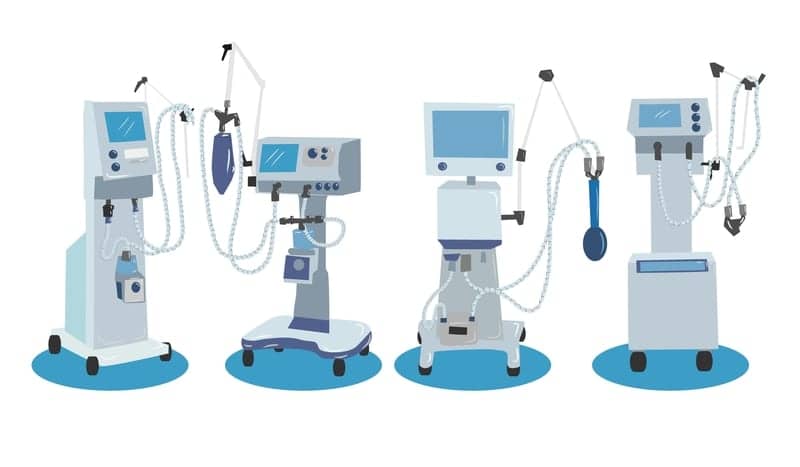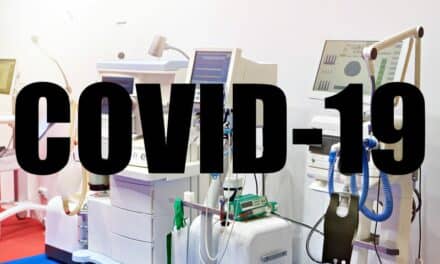By Arthur Zenian
The COVID-19 pandemic has cast a spotlight on the importance of mechanical ventilators, or respirators. Here is what you need to know about these life-saving devices:
Why Is a Mechanical Ventilator Used?
The mechanical ventilator does the work of a patient’s breathing so their body can rest and recover. These machines are used as short-term respiratory assistance in surgeries, for longer periods in critically ill patients, and at home by people who have difficulty breathing normally.
Mechanical ventilation is also part of the arsenal supportive care clinicians use for COVID-19 patients with the most severe lung symptoms. A COVID-19 infection can cause fluids and mucus to build up in the lungs and block oxygenation of lung tissue. Mechanical ventilation can help support COVID-19 patients’ breathing until their immune system and treatment can clear the infection and proper lung function is restored.
Different Types of Ventilation
Mechanical ventilation first came into use in 1929. There are two main types: positive-pressure ventilation, which pushes the air into the lungs, and negative-pressure ventilation, which sucks the air into the lungs by making the chest expand and contract. The early ventilators were negative-pressure ventilators. This type of ventilation is now almost extinct.
The iron lung was the first mechanical ventilator. It was a metal cylinder which enveloped the patient completely up to the neck. Next came the chest cuirass, a small shell which can be strapped to the patient’s chest to create the negative pressure.
Positive-pressure ventilators were developed in the early 1950s to treat polio patients with respiratory paralysis. These ventilators blow positive air into the patient’s lungs through a tube. The tube might be invasive or noninvasive.
There are two types of invasive ventilation, which is usually performed in a hospital setting:
- Intubation: the tube is inserted into the patient’s airway (trachea) through the mouth or nose.
- Tracheostomy: the tube is inserted through a hole made into the airway (windpipe).
Noninvasive mechanical ventilators are used with masks and can be used at home. There are three types:
- Continuous positive airway pressure (CPAP): delivers constant and steady air pressure.
- Auto titrating (adjustable) positive airway pressure (APAP): changes air pressure according to the breathing pattern.
- Bilevel positive airway pressure (BiPAP): delivers air with different pressures for inhalation (breathing in) and exhalation (breathing out).
How Does a Mechanical Ventilator Work?
Negative-Pressure Ventilation
The iron lung of the past forces the chest cavity to expand and contract by adjusting the air pressure inside a chamber that envelops the body up to the neck. A vacuum pump creates a negative pressure in the iron lung’s chamber which makes the patient’s chest expand, drawing air in. When the negative pressure releases, the patient’s chest recoils, and air pushes out.
The negative pressure created in the chamber affects the stomach and heart as well, which was one problem with using the iron lung. This type of ventilator also curtailed the patient’s mobility and made caregiving difficult.
Cuirass, developed later, is a small form-fitted shell with a bladder that is strapped to a patient’s chest. It applies negative pressure to stimulate the chest to expand and contract. Cuirass is used in very few situations today. It is a suitable option for patients with neuromuscular disorders, but it cannot be used for patients lying down.
Positive-Pressure Ventilation
Currently, positive pressure is the most common form of mechanical ventilation in hospitals. Positive-pressure ventilators push the air into the patient’s airway. The machine continually blows and stops in regular preset cycles, enabling the lungs to receive oxygen and expel carbon dioxide. Types of positive-pressure ventilators include:
- Volume-controlled: delivers a preset volume of air into the patient’s trachea even if it entails high airway pressure. When the flow is stopped the chest recoils and expels the air out.
- Pressure-controlled: delivers air till the airway pressure limit is reached and the valve opens to expel air. The volume of air delivered may vary depending on the airway resistance and lung capacity.
- Dual control: combines the advantages of volume control and pressure control and delivers airflow based on the requirement and response of the patient.
In the last two decades, companies have developed several new modes of mechanical ventilation by merging ventilator and computer technologies. This has increasingly helped doctors meet individual requirements in mechanical ventilation, paving the way for more advanced ventilators in the future.
Arthur Zenian is CEO of enBio Corp. based in Burbank, Calif. Questions and comments can be directed to 24×7 Magazine chief editor Keri Forsythe-Stephens at [email protected].





